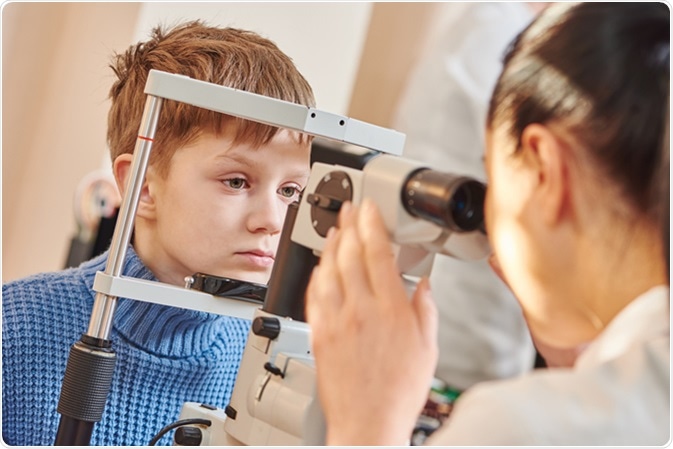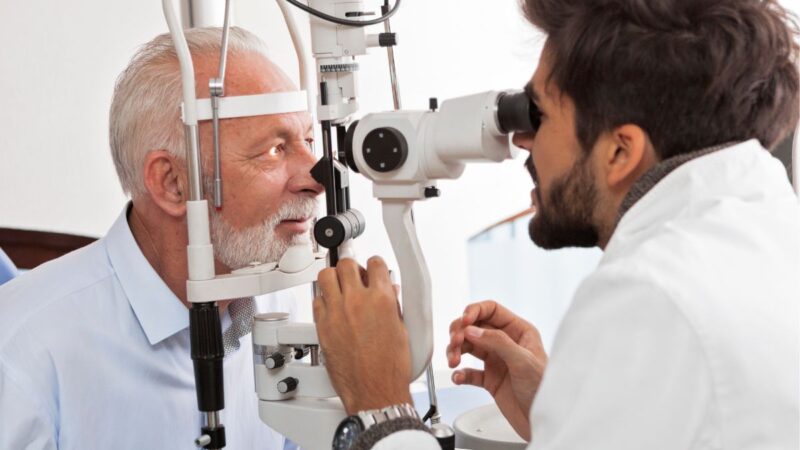Expert Glaucoma Service Near Me: Specialized Care at Our Clinic
Expert Glaucoma Service Near Me: Specialized Care at Our Clinic
Blog Article
Checking Out the State-of-the-Art Technologies Used for Dealing With and identifying Eye Conditions
In the world of ophthalmology, the evolution of innovation has actually significantly boosted the tools offered for identifying and treating different eye problems. From sophisticated imaging technologies that provide thorough understandings right into eye structures to robotic-assisted procedures that supply unparalleled accuracy, the landscape of eye care is regularly progressing. With the integration of synthetic intelligence in diagnostics, genetics treatment innovations, and digital reality rehab, the opportunities for improving client end results are broadening at a quick speed. The convergence of these sophisticated modern technologies holds the assurance of transforming the area of ophthalmology, providing new methods for customized and effective therapies.

Advanced Imaging Technologies
Advanced Imaging Technologies have actually transformed the area of ophthalmology by offering detailed and exact visualization of the eye structures. This non-invasive technique aids in the early detection and surveillance of various eye conditions such as macular deterioration, diabetic person retinopathy, and glaucoma.
Furthermore, Fundus Photography is another important tool in sensory imaging. This method involves catching in-depth pictures of the rear of the eye, including the retina and optic disc. Fundus Digital photography assists in recording the progression of eye diseases, examining treatment efficacy, and educating people regarding their eye health and wellness.

Robotic-Assisted Surgical Procedures
Robotic-assisted medical treatments have substantially progressed the capacities of ophthalmic surgery, introducing a brand-new age of precision and efficiency in dealing with numerous eye conditions. By incorporating robot innovation right into surgical procedures, ophthalmologists can accomplish unmatched precision and control, leading to enhanced client outcomes.
Among the main advantages of robotic-assisted surgical treatment in ophthalmology is the enhanced mastery and stability it offers to surgeons. The robot arms can carry out exact activities with a high degree of precision, enabling for delicate treatments with marginal invasiveness. This degree of accuracy is particularly valuable in surgical procedures entailing the retina, where even small mistakes can have substantial ramifications for an individual's vision.
Additionally, robotic-assisted medical systems provide real-time imaging and comments to the surgeon, enabling them to make educated choices during the procedure. This modern technology improves the specialist's situational awareness and permits modifications to be made quickly, making sure ideal results for the patient.
Expert System in Diagnostics
With the evolution of sophisticated innovations boosting surgical accuracy in ocular treatments, the assimilation of Artificial Intelligence in diagnostics has actually become a critical growth changing the field of eye care. Man-made Knowledge (AI) algorithms are being progressively used to examine complicated data from imaging technologies like optical coherence tomography (OCT) and fundus photography to aid in the very early detection and accurate medical diagnosis of various eye conditions. These AI systems can efficiently identify patterns and abnormalities in pictures that might not be noticeable to the human eye, making it possible for quicker medical diagnosis and therapy preparation.
AI algorithms can additionally predict disease progression, suggest individualized therapy plans, and examine the efficiency of interventions. By improving the diagnostic process, AI not only boosts the effectiveness of eye care specialists but additionally boosts client results by making it possible for prompt treatments. As AI continues to advancement, its role in diagnostics is anticipated to increase, offering new opportunities for early intervention and individualized therapy in the area of ophthalmology.
Genetics Treatment Technologies
In the realm of ocular developments, recent strides in genetics treatment technologies have sparked significant rate of interest among scientists and health care experts alike. Genetics therapy holds enormous promise in revolutionizing the treatment of different eye problems by targeting the underlying genetic causes. By introducing hereditary product into cells to make up for abnormal genes or to offer an absent genetics, gene treatment provides a customized technique to dealing with inherited eye disorders such as retinitis pigmentosa, Leber hereditary amaurosis, and others that were previously taken into consideration untreatable.

As research in gene treatment proceeds to advance, the capacity for tailored treatments for a wider series of eye conditions grows, providing brand-new expect patients with hereditary eye illness.
Digital Truth Rehab
Virtual fact rehab has actually become an advanced strategy in boosting the recuperation and recovery procedures for people with various visual impairments. refractive surgeries in al. By imitating real-world environments via immersive technology, digital truth supplies an one-of-a-kind system for vision treatment and rehabilitation. This ingenious method enables people to participate in interactive workouts and activities developed to improve aesthetic acuity, deepness perception, eye coordination, and total visual functioning
One key benefit of online fact recovery is its ability to customize treatment programs based upon the specific needs and capacities of each patient. With real-time feedback and tracking, healthcare experts can track progress, readjust treatments, and provide tailored care to enhance end results. In addition, virtual fact modern technology look these up can develop a controlled and risk-free space for individuals to practice visual jobs, get over difficulties, and construct self-confidence in a digital setting prior to transitioning to real-world circumstances.
Verdict
Finally, the advancements in imaging innovations, robotic-assisted surgical procedures, expert system diagnostics, gene therapy advancements, and virtual reality recovery have considerably improved the diagnosis and treatment of eye problems. cataract care service. These modern technologies have actually transformed the field of ophthalmology, permitting for even more precise and effective procedures. As modern technology proceeds to advance, the future of eye treatment looks appealing with the capacity for also more innovative solutions to boost person end results
In the world of ophthalmology, the development of innovation has considerably improved the tools readily available for identifying and treating different eye conditions. Fundus Digital photography web link aids in documenting the development of eye conditions, assessing treatment efficiency, and educating individuals regarding their eye health.
Fabricated Intelligence (AI) algorithms are being increasingly used to assess complicated information from imaging innovations like optical coherence tomography (OCT) and fundus photography to aid in the very early detection and accurate diagnosis of various eye conditions.In conclusion, the developments in imaging modern technologies, robotic-assisted surgical treatments, man-made intelligence diagnostics, gene treatment technologies, and digital truth rehabilitation have actually substantially improved the diagnosis and treatment of eye problems. As modern technology proceeds to evolve, the future of eye treatment looks promising with the possibility for even more ingenious solutions to improve patient outcomes.
Report this page